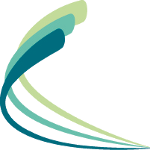Birth is a sacred experience. The entry of a new human being into the world is very special. With the pain and the danger comes the paradoxical experience of love, joy, elation and pride.
Of course, this process is not always smooth and rarely tragically so. There are many factors that affect the outcome, some of which are within the control of the participants and some of which are down to luck.
A couple of weeks before writing this article I had the extraordinary privilege of being invited to attend the birth of my first grandchild where I was
able to use my skills as a craniosacral therapist. The birth took place in a midwife-run birth centre in a general hospital. The experience was one of
integrated medicine at its best.
All the emergency facilities were available if necessary but the aim of the midwives was to make the experience as hands-off and mother centred as possible. They respected the wishes of the mother as regards the use of complementary medicine and one of the midwives offered aromatherapy.
During the five-and-a-half hours we were there, my wife administered homeopathic remedies as necessary and massage, and I was called on three times. The first time was at the beginning of labour where the mother’s cranium needed settling. It may be that changes in the pituitary gland affected the central nervous system and the adjacent tentorum cerebellum (dural membrane).
The second time was when her cervix was fully dilated and just before she went into the birthing pool. The treatment then encouraged the pelvis to
open out helping to facilitate the movement of the baby through the pelvis. In the birthing pool, the labour progressed well and there was an extraordinary atmosphere just before the baby was born, a sense of stillness and expectation. Both mother and baby were calm and peaceful after the birth.
My final job was to examine the baby after an initial feed and all the necessary checks had been made. Her head shape was typical of the newborn, reflecting the moulding and overlapping of the cranial bones as they passed through the birth canal. Her system expressed some compression on the left side of the head especially the temporal bone. In addition, her neck was stiff and there was some compression in the upper thoracic area.
Resolving these tensions quickly prevent the baby developing compensatory mechanical disturbances which when established are more difficult to resolve.
Working in this way contrasts with working in the clinic where the patients have a set time and where the processes that gave rise to the problems are in the past.
Working with a patient in labour is to work with a dynamic, fluid and evolving process influencing the outcome toward the desired endpoint. It is
exciting, challenging and very rewarding. In a mother-centred situation where she is supported and empowered, this mysterious miraculous and
yet commonplace experience can be enhanced.
The skills of the craniosacral therapist have been valued in the treatment of the mother and baby after the birth for a long time. It would be an
advance if these skills were more widely available in integrated medical units.
© Jonathan Lawrence, Turning Point Training - 01769 579079 - www.turningpointtraining.org
This article was originally published in the Choice Health & Wellbeing journal.
